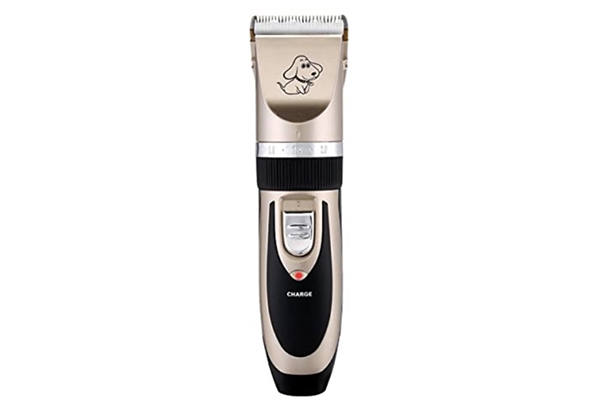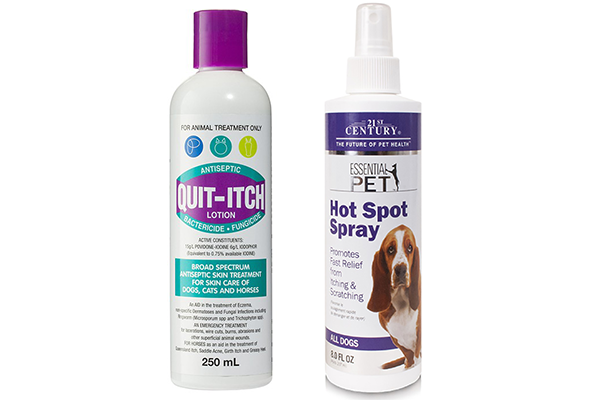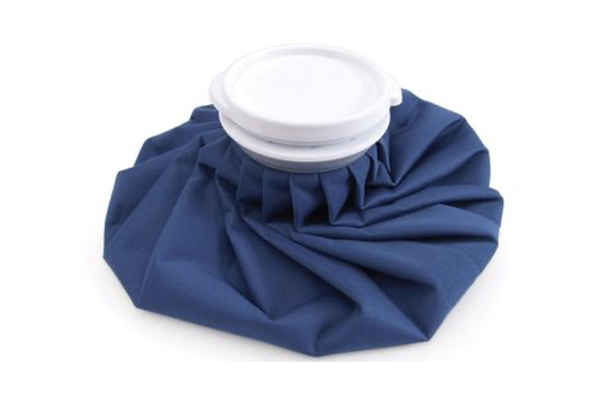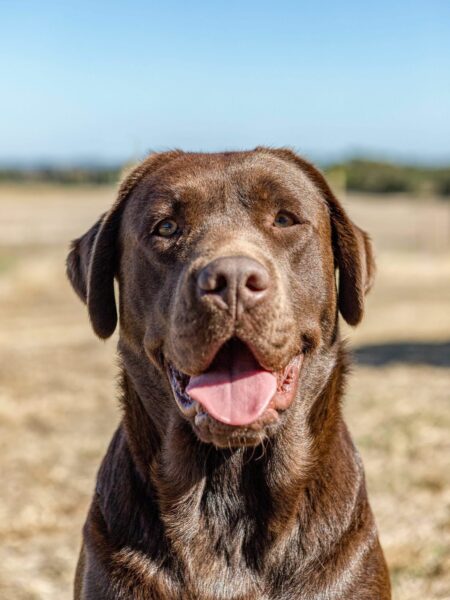Hot Spots
A hot spot, also known as moist dermatitis or pyotraumatic dermatitis, is a superficial common skin infection that happens when normal skin bacteria overrun the skin’s defences as a result of damage to its surface.
The skin damage is most often started by the dog chewing, scratching, licking and gnawing at itself. In the first stages of the formation of hot spots, the skin becomes moist, red, itchy, and infected. Pus begins to ooze from the traumatised skin as infection sets in. Then, the dried pus and damaged skin surface will work to form a tightly-adhered crust, and you will likely notice hair loss over the infection site. The formation of moist dermatitis can be a very painful process, and frequently, dogs will show pain when the area is touched.
Dogs are their own worst enemy when it comes to hot spots, and they are generally created by their own over-zealous self-licking and chewing. They can arise surprisingly quickly: a few minutes of “work” can create an impressive area of self-inflicted trauma. The good news is that hot spots almost always look worse than they actually are, and infection is usually superficial—often resolving with topical treatment alone.
Causes
- Allergies: Both environmental and food allergies can cause itching in dogs.
- Pyoderma: Primary skin infections caused by bacteria or yeast (fungus) can cause itching that leads to secondary hot spots.
- Parasites: Insect bites can be incredibly itchy! Bites from fleas, mosquitoes, ticks, mites, and other small insects can cause skin irritation and lead to itching.
- Ear infections: Bacteria or yeast in the ear canal can cause dogs to itch at the area around the ears.
- Behavioral issues: Sometimes dogs lick themselves because of boredom, stress, or Play biting with friends.
- Moisture and humidity: Hot spots are more likely to occur during warm, humid weather. Excess moisture in the coat caused by swimming or bathing can also lead to hot spots
- Collars can also cause hot spots, a lot of hot spots occur under a wet or damp collar.
Treatment
If the dog’s hot spot is small, non-painful, recognised early, and is uncomplicated, it may be possible to begin treatment at home with over-the-counter products made for this use.




